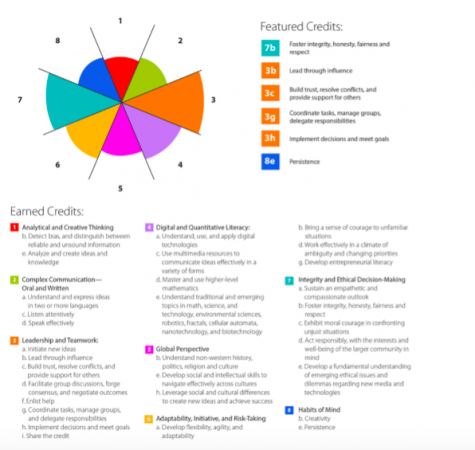
After sitting in a classroom for 70+ hours in a school year, have you ever looked at your final grade and asked yourself, where did this come from? Despite the many problems associated with traditional transcripts – often being misinforming and oversimplified – many high schools across the nation still use them merely because they’re considered the norm. But are they the best option?
Anne Graybeal offers a different perspective. She told us that schools ranging from small to large, young to old, independent to the public, are revolutionizing the way that a student’s academic performance is measured and valued. Many schools are doing this by changing their transcripts to a newer method called the Mastery Transcript.
Jay Dean describes The MTC’s goal as, “better at differentiating between kids and allow[ing] each student to share more about their individual successes and get to know more about them instead of just the traditional transcript that doesn’t really tell you a lot.”
Alita Shenk summarizes it as having “the potential of reflecting a more meaningful picture than just an A, B or C.”
The MTC offers ways to specify and specialize each student’s highlighted focus on their transcripts. Both Dean and Graybeal compare the visuals offered by MTC to a pie chart. Different aspects of the pie chart include categories like analytical and creative thinking, communication, leadership, and teamwork.
The only question is, without a simple letter grade for colleges to look at, there are concerns that colleges may not even know how to interpret a student’s transcript that isn’t a traditional transcript. But even traditional transcripts vary widely by school.
In our discussion with Graybeal, we learned that colleges are already adapting their admissions process based on what schools give them, and ultimately, high schools are leading the way, not colleges. Graybeal told us that colleges aren’t selectively choosing what transcripts they accept, rather schools are customizing their own transcripts, and colleges have to respond to those changes.
The good news is that even students who would prefer to keep a traditional transcript would have the choice early on in their high school career as to what they and future colleges would see.
For Blake, the potential transition to a new type of high school transcript is far off in the future. If the Mastery Transcript is implemented, a Blake Student’s transcript a decade from now may look dramatically different than the traditional letter grade transcript we are so familiar with today. So, with these two radically different options in mind, if given the option, what would you want your transcript to look like?




